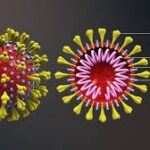The extended autonomic system, dyshomeostasis, and COVID-19
Kristen Sparrow • December 13, 2022

 This article is hypothesizing that a preexisting dsynautonomia exists in many of the groups more susceptible to severe covid.
This article is hypothesizing that a preexisting dsynautonomia exists in many of the groups more susceptible to severe covid.
I’m interested in almost all things related to the autonomic nervous system, and there has been some suggestion that long-covid has autonomic features as part of the problem.
“The purpose of this essay is to convey a perspective that can account for the age-relatedness of COVID-19 mortality and the multi-organ—and therefore multi-disciplinary—aspects of the disease. The thesis is that both of these aspects may reflect dysautonomia, broadly defined as a condition where changes in functioning of one or more components of the autonomic nervous system adversely affect health.”
https://pubmed.ncbi.nlm.nih.gov/32700055/
Goldstein DS. The extended autonomic system, dyshomeostasis, and COVID-19. Clin Auton Res. 2020 Aug;30(4):299-315. doi: 10.1007/s10286-020-00714-0. Epub 2020 Jul 22. PMID: 32700055; PMCID: PMC7374073.
Abstract
The pandemic viral illness COVID-19 is especially life-threatening in the elderly and in those with any of a variety of chronic medical conditions. This essay explores the possibility that the heightened risk may involve activation of the “extended autonomic system” (EAS). Traditionally, the autonomic nervous system has been viewed as consisting of the sympathetic nervous system, the parasympathetic nervous system, and the enteric nervous system. Over the past century, however, neuroendocrine and neuroimmune systems have come to the fore, justifying expansion of the meaning of “autonomic.” Additional facets include the sympathetic adrenergic system, for which adrenaline is the key effector; the hypothalamic-pituitary-adrenocortical axis; arginine vasopressin (synonymous with anti-diuretic hormone); the renin-angiotensin-aldosterone system, with angiotensin II and aldosterone the main effectors; and cholinergic anti-inflammatory and sympathetic inflammasomal pathways. A hierarchical brain network-the “central autonomic network”-regulates these systems; embedded within it are components of the Chrousos/Gold “stress system.” Acute, coordinated alterations in homeostatic settings (allostasis) can be crucial for surviving stressors such as traumatic hemorrhage, asphyxiation, and sepsis, which throughout human evolution have threatened homeostasis; however, intense or long-term EAS activation may cause harm. While required for appropriate responses in emergencies, EAS activation in the setting of chronically decreased homeostatic efficiencies (dyshomeostasis) may reduce thresholds for induction of destabilizing, lethal vicious cycles. Testable hypotheses derived from these concepts are that biomarkers of EAS activation correlate with clinical and pathophysiologic data and predict outcome in COVID-19 and that treatments targeting specific abnormalities identified in individual patients may be beneficial.
Keywords: Adrenaline; Autonomic; COVID-19; Catecholamines; Dyshomeostasis; Homeostasis; Stress; Sympathetic.

